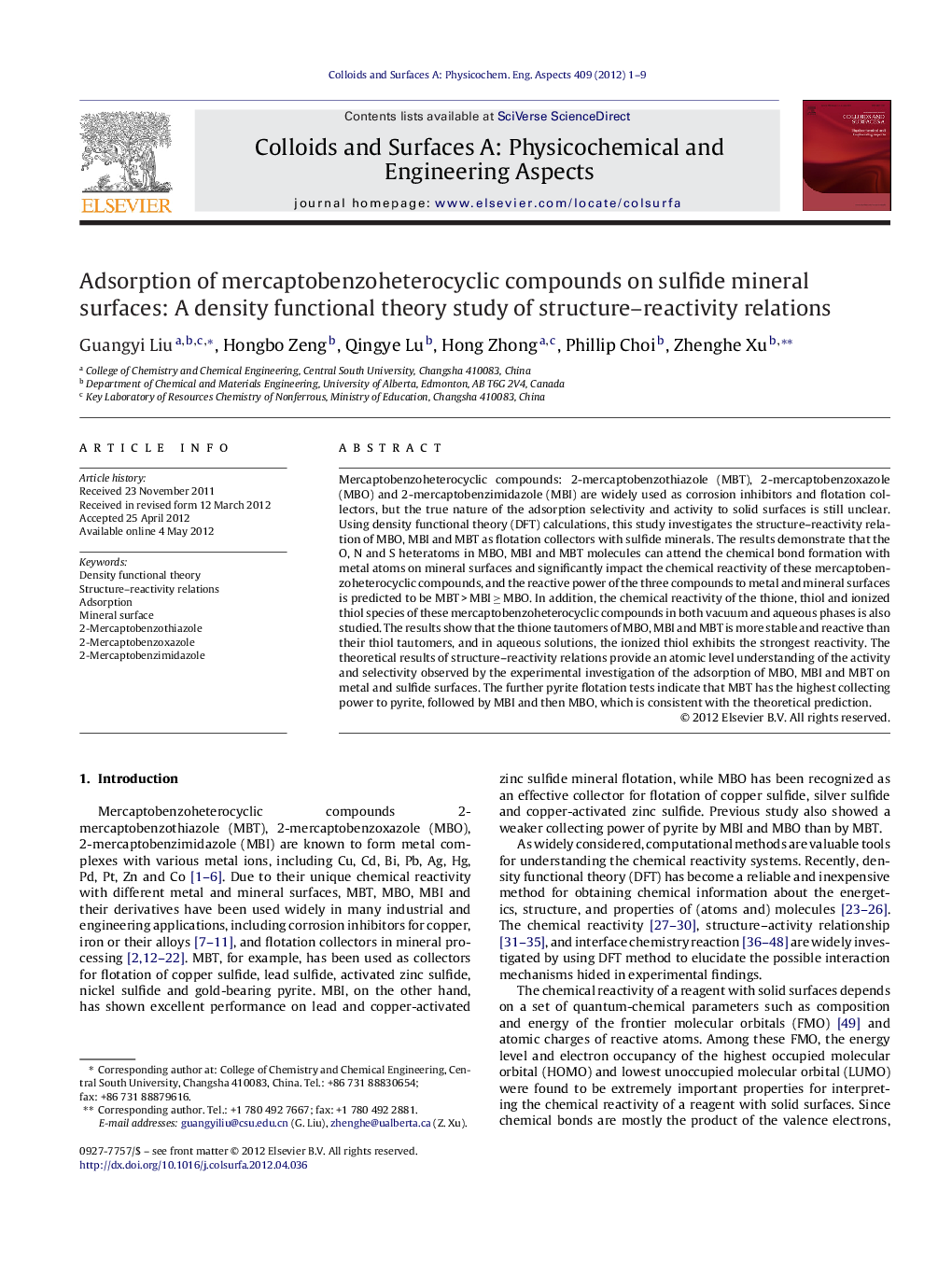| کد مقاله | کد نشریه | سال انتشار | مقاله انگلیسی | نسخه تمام متن |
|---|---|---|---|---|
| 594060 | 1453964 | 2012 | 9 صفحه PDF | دانلود رایگان |

Mercaptobenzoheterocyclic compounds: 2-mercaptobenzothiazole (MBT), 2-mercaptobenzoxazole (MBO) and 2-mercaptobenzimidazole (MBI) are widely used as corrosion inhibitors and flotation collectors, but the true nature of the adsorption selectivity and activity to solid surfaces is still unclear. Using density functional theory (DFT) calculations, this study investigates the structure–reactivity relation of MBO, MBI and MBT as flotation collectors with sulfide minerals. The results demonstrate that the O, N and S heteratoms in MBO, MBI and MBT molecules can attend the chemical bond formation with metal atoms on mineral surfaces and significantly impact the chemical reactivity of these mercaptobenzoheterocyclic compounds, and the reactive power of the three compounds to metal and mineral surfaces is predicted to be MBT > MBI ≥ MBO. In addition, the chemical reactivity of the thione, thiol and ionized thiol species of these mercaptobenzoheterocyclic compounds in both vacuum and aqueous phases is also studied. The results show that the thione tautomers of MBO, MBI and MBT is more stable and reactive than their thiol tautomers, and in aqueous solutions, the ionized thiol exhibits the strongest reactivity. The theoretical results of structure–reactivity relations provide an atomic level understanding of the activity and selectivity observed by the experimental investigation of the adsorption of MBO, MBI and MBT on metal and sulfide surfaces. The further pyrite flotation tests indicate that MBT has the highest collecting power to pyrite, followed by MBI and then MBO, which is consistent with the theoretical prediction.
The relative contribution of the computationally quantum-chemical parameter values: 1 – dipole moment, 2 – Natural group charge of N4C2(S1) group, 3 – HOMO energy, 4 – LUMO energy, 5 – contribution of exocyclic sulfur atom to HOMO, 6 – contribution of N4C2(S1)X3 group to LUMO.Figure optionsDownload as PowerPoint slideHighlights
► Quantum-chemical parameters of MBT, MBO and MBI sulfide collectors using DFT.
► Relative chemical reactivity of MBO, MBI or MBT with sulfide in aqueous phase.
► Structure–reactivity relationship of MBT, MBO and MBI.
► Excellent agreement of model prediction with pyrite flotation.
Journal: Colloids and Surfaces A: Physicochemical and Engineering Aspects - Volume 409, 5 September 2012, Pages 1–9